Lalibela packs a mighty punch. The hype is justified, and the exorbitant prices actually do reflect the small town’s value. But what is it with this country and fricken bees?
When Negus and Saint Gebre Mesqel Lalibela was born, a swarm of bees suddenly surrounded him. For this reason, he was given the name Lalibela, which translates as “the bees recognise his sovereignty.” Stay humble. Lalibela later had visions of Jerusalem, which sparked his quest to construct a New Jerusalem that would be easier for pilgrims to visit. The result is the 11 rock-hewn churches of the town now named after Lalibela himself. Carved directly out of the ground beneath, these freestanding monoliths are unlike anything else in the world and are a testament to the faith of those who built it.
The same wonder can’t be found in the rest of the town, though. Lalibela is really one big dirt road across two mountain ridges. There is very little in the way of construction or infrastructure, save for several large and luxurious hotels for foreigners. Only two roads lead to Lalibela, both of which are unpaved and in very poor condition. But because the churches are so lively and expansive, you’ll spend all your time in them anyway.

Let’s address the elephant rock-hewn church in the room: Bet Giyorgis. Translated the Church of St. George, this 13th century monolith is perhaps the poster child for Ethiopia as a tourist destination, and rightfully so. It’s the most spectacular of Lalibela’s churches (which is no easy feat), and also the only one without a UNESCO-mandated protective canopy installed over it.
Walking through the trenches that lead down into the church is an experience in itself, and once you’ve reached the bottom, Bet Giyorgis towers over you with its enormous presence. It might only be designed as a two-storey building, but it’s actually around five storeys high by today’s standards.
Inside is a different story, if you’ll excuse my appalling segue. The paintings and interior architecture aren’t bad by any means, but not the best the town has to offer. It’s also filled with other tourists, while in the two main rock-hewn church complexes you can wander through flocks of local churchgoers and only a handful of tourists.

The two main underground complexes, neither of which include Bet Giyorgis, are complex webs of tunnels, trenches and, of course, churches—all dug out of the rock beneath. I’d hate to over use terms like maze and labyrinth on this blog but there’s no other way to describe Lalibela’s churches. You can wander for hours and not come across the same church twice, and you actually do need to take care to remember which tunnels you came through in order to get out!
I should also add that the churches are in heavy use. Visiting the churches over several days, I encountered numerous large services at different locations and times of day, in addition to the countless pilgrims and local worshipers who pray at each of the churches. This fact makes it almost difficult for me to consider the rock-hewn churches of Lalibela as historical sites, as they’re in use just as much if not more than they were originally.

Is living history an OK term? It’s hard not to conflate persistent traditions with being old fashioned in a place like Lalibela. Everything is just so old! However even if they were built today, the churches would be marvels in their own right. The fact that they were built with pithy hand tools over almost a thousand years ago is truly amazing.
Bet Medhane Alem (House of the Saviour of the World) is the first church after entering the main complex. It’s the largest and resembles the Acropolis more than it does most of the other churches. It’s also where you are hit with how immensely holy this place is. When I walked down the stairs (remember, everything here is technically underground), a frail, elderly woman asked me to help her down too. After thanking me profusely, she began bowing, kissing the floor and walls, and praying, like clockwork. And she was just one of hundreds.
Inside Bet Medhane Alem, there are columns everywhere, owing to its size and shape. It’s dim and quiet too, save for the solemn chants of worshipers and glimmers of light through the immaculately-carved windows. Oh, and the odd fluoro tube too. Again, everything going on here signifies it as a place of immense devotion and worship, and just being present is surreal.

Walk through a narrow tunnel and you’ll end up at Bet Maryam. No prizes for guessing who this one’s devoted to. Owing to Mary’s veneration among Ethiopian Orthodox Christians, it’s one of the more popular churches with pilgrims, and you’ll see quite a few camped out in its relatively expansive courtyard. It also seems to be a favourite spot for reading the Bible, probably thanks to the fact it gets a fair amount of sunlight unlike many of the other churches. The interior of Bet Maryam is one of Lalibela’s finest too, with intricate carvings and well-preserved wall and ceiling paintings.
This is where the first complex becomes a choose-your-own-adventure experience. Churches branch out from different sides, and trenches and tunnels lead in different directions. The trenches in particular are a great reminder of just how deep these churches are.

One of the churches, Bet Golgotha (no prizes this time, either) has fantastic, life-size niches of the 12 Apostles, however only four are visible as the remainder are off-limits to tourists. The four that I was allowed to see are actually also off-limits to women, like many of the churches I visited in Ethiopia. A couple of women got a nasty surprise when the priest shrieked at them for accidentally entering.
In between the two complexes and Bet Giyorgis are heaps and heaps of tukuls, which are the local style of hut. Some were still occupied, while others were shops. It’s a pretty stark contrast to enormous, monolithic, rock-hewn churches that lay beneath.
Upon entering the second complex I interrupted the end of a church service at Bet Abba Libanos. At first I was hesitant to intrude, but the man at the door insisted that it wasn’t a problem. This was the first of many, but it was amazing to be present for the chanting and drumming. Afterwards, service attendees shared injera amongst each other.
Said to have been constructed overnight by Queen Meskel Kebra with the help of angels after Lalibela’s death, Bet Abba Libanos is the only church to have its ceiling and floor carved out of rock but its walls made of bricks.

The most significant church in this cluster is Bet Amanuel, which is the most intricately-carved and most well-preserved of the lot. Its stripy architecture replicates the wooden Axumite architecture that preceded it, such as that at Yemrehanna Kristos (read on) and Debre Damo. It’s also believed to have served as the royal family’s private chapel.

Bet Gabriel-Rufael is another pair of churches in the complex which looks spectacular, but unfortunately it was off limits to tourists because of ongoing restoration financed by the American embassy. While it’s a shame, it’s great that such a significant site for the local (and wider Ethiopian) population is receiving priority treatment for its preservation. Maybe one day I can come back when it’s finished too!
This complex is even more extensive and multi-layered than the first, with staircases leading in every direction and tunnels so long they are pitch black. If you can easily find your way out, you haven’t gone in far enough, and that’s not an exaggeration.
Back to the town itself: what’s there to do besides visit the churches? Nor much. Similar to Agra or Siem Reap, half of the town caters exclusively to tourists and the other half is less than unremarkable. The main saving grace is its earthly (or verdant, depending on the season) 360° vistas. These are best experienced from the Ben Ababa restaurant at the far end of the mountain ridge. Run by an elderly Scottish-Ethiopian couple, this restaurant is unlike anything I’ve ever seen. Looking like something out of a Dali painting rather than something you’d expect to see in rural Ethipia, the building owes its radical design to a pair of young architects from Addis Ababa. The food (both Ethiopian and western) is forgettable, but what makes it worth visiting are the mushroom-esque platforms which provide an unobstructed view of mountains and valleys as far as the eye can see.
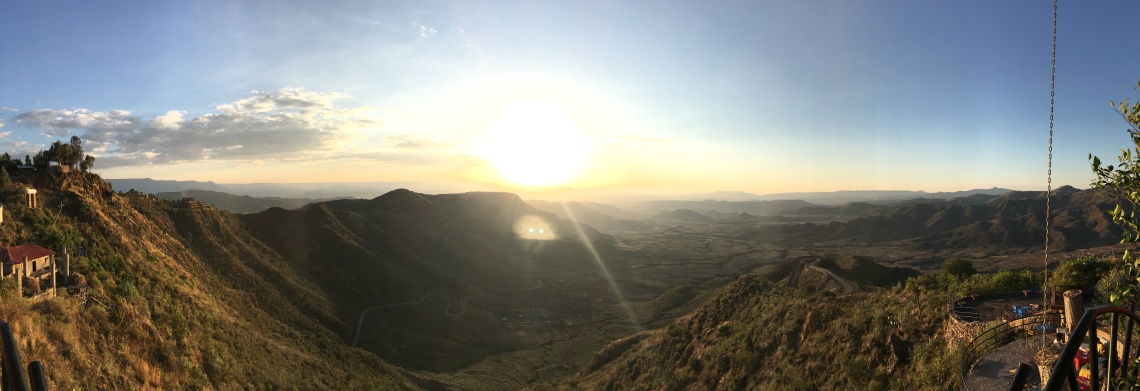
Speaking of food, the tej is great in Lalibela. Tej is a local wine made from—you guessed it, HONEY! The tej I had in Lalibela was some of the best I had in the country. I happened to have it at an azmari bet, a traditional type of Ethiopian venue where a performer called an azmari basically plays a kirar (similar to a lyre) and roasts everyone in the audience one by one. While I had no idea what the azmari said about me in Amharic, listing to everyone’s eruptions of laughter throughout the night was pretty funny in itself.
Everyone in an azmari bet is also expected to dance apparently. When the azmari came over to my table, with me and some other faranjis I had met, we were thrust into the spotlight. Everyone else at the table danced in their seat when they were called upon, but when it was my turn, I thought “fuck it”. When I got up to dance with one of the hosts, the whole room gave the biggest cheer of the night. Dancing in Ethiopia is pretty straightforward, but that doesn’t make it easy. It essentially involves dancing one-on-one while gyrating your shoulders several times per second to the rhythm of the music. Obviously I was pretty shit at it, but everyone seemed to appreciate my effort and energy—so much so that for the rest of the night, women and men, young and old, kept pulling me up to dance with me. I don’t remember much after the first few turns, and I don’t have any photos to help me, but I do remember having a pretty good time and getting heaps of comments from some of the locals afterwards. Anyway, back to the tej. I tried three brews: weak, medium and strong. To be honest, it’s a bit of an acquired taste and I stuck to beer for the rest of the night. But at least the science-experiment-like flasks it’s served in look cool.
If you want more churches, and maybe a monastery or two for good measure, the region’s got you covered. If you venture out of Lalibela to some of the neighbouring mountains and valleys, you’ll be rewarded with churches unlike any others in the country. On the journey, you’ll also see entire villages of tukuls (the region’s style of stone hut). It’s eye-opening, to say the least. I headed to the town of Bilbila, and saw two really worthwhile churches.
Yemrehanna Kristos is one of a select-few remaining buildings to be from the Axumite era. Unlike Lalibela’s rock-hewn churches, Yemrehanna Kristos is built from stone and wood—rather than carved out of the ground—and stands free inside of a high-up cave on Mt. Abuna Yosef. To get there, you have to climb up a staircase that leads halfway up the hill. Once at the cave, you’ll see an ugly protective wall shielding the wooden church form the outside world. The church itself is beautiful. It predates the rock-hewn churches by an almost a century and it’s clear how it has influenced those newer churches stylistically.
Unsurprisingly, it was built by Negus (and also Saint, again) Yemrehana Krestos, and locals told me that Negus Gebre Mesqel Lalibela was keen to compete for a larger legacy, hence the churches in Lalibela proper. I was also told the olive wood and gypsum that the church is made of was transported from Jerusalem and Egypt by angels, allowing the church to be built in a relatively short period of time. The floor of the entire cave, however, is made of locally-sourced pine wood. Underneath are puddles and mash, the water from which is considered holy and as such has curative properties. There are specific holes in the floor where priests can collect the water, and it’s quite interesting to see how two whole buildings are supported by the wood above this water. Inside, the intricate woodwork continues, and there also some exceptional paintings on the walls, pillars and ceilings. At the back of the cave are the mummified remains of thousands of pilgrims, some who have come from as far as Jerusalem itself. You could literally just touch the skeletons, they’re that prominent. Yet this doesn’t seem to bother the churchgoers who fill the cave during services.
The final church I visited, Bilbila Giyorgis, is where I had the best honey in the world. Yes, it’s another church dedicated to St George. Get used to it, he’s by far the most revered Saint in the country. Babila Giyorgis is said to date from the 5th century, and compared to the other churches, you can definitely tell. It’s semi-monolithic, meaning the interior and façade have been carved out of the rock, but it is not freestanding. Unfortunately the façade is currently obscured by protective wooden scaffolding, but that didn’t deter me from trying this honey.
Linking back to the region’s obsession with bees, five swarms of the black and yellow insects made themselves at home shortly after the church was built. The priest explained that the present colonies have continued on from that time. The honey itself is collected once a year, and I was lucky to be allowed to try a bit of what still remained from last year. As the church has no windows and no lights, it’s pretty difficult to see the beehives as well as the wall paintings. Not that it mattered, as I was happy to surrender my sense of sight to my sense of taste. Think of it as synaesthesia. As with anything church-related, the honey is also considered to be holy and is claimed to have curative properties for skin, abdominal and mental conditions.

I was only allowed to try the honey once I had walked sufficiently far enough away from the church, and I can confidently report back that holy is an understatement. Not only does it look opaque, but its texture is almost gritty. It’s so deliciously full on. And that’s ignoring the beeswax, honeycomb and dead/sleeping(?) baby bees which I had to constantly spit out like pips. The flavour, too, is raw and earthly and unique; like most Ethiopian honey, it’s more floral than what I’m used to, and it’s also really sweet, but not in a sugary way. It’s like comparing the sweetness of sugar to the sweetness of citrus, only that the citrus had been concentrated enough to be equally sweet, just with a different flavour. I’m rambling here, and probably not making any sense, but I still can remember the exact taste of that tiny portion of honey I had. It’s one-of-a-kind, sublime and even has healing properties! The flavour really makes you question why we refine our honey so much back at home.

And that’s how I will most remember Lalibela—by something bee-related. Negus Gebre Mesqel Lalibela would be proud, and so he should be. Not that he had anything to do with the honey which predates his reign by a few centuries, but you get the idea.
Lalibela is the main tourist destination in Ethiopia, and everywhere you go you can tell. Several people attempted to fuck me over quite badly, which make for good stories in real life but not great blog posts. Though I will mention that my hotel’s manager accused me of not paying and tried to kick my off my bus at 6 AM by phoning the driver, who only let me back on because he felt sorry for me. I only splurged at his shithole cause I’d been really sick for the past few days, but it wasn’t worth it at all. Avoid the Red Rock Hotel and its incompetent manager at all costs.
Before Negus Lalibela, the town was nothing.It was the bees who had the foresight to recognise his sovereignty, and boy did it pay off. Lalibela is revered by pilgrims and UNESCO alike. The least I could in return is recognise the bees, and spread the good news of their honey. The script for Bee Movie 2 just writes itself.

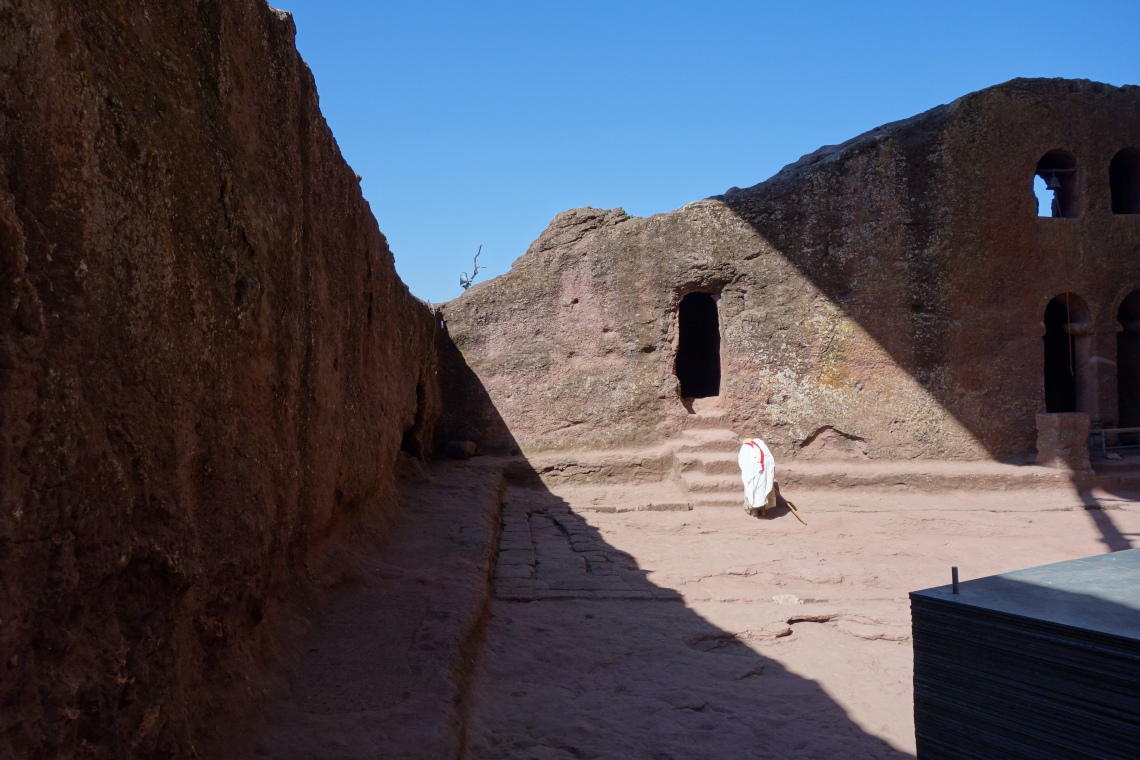



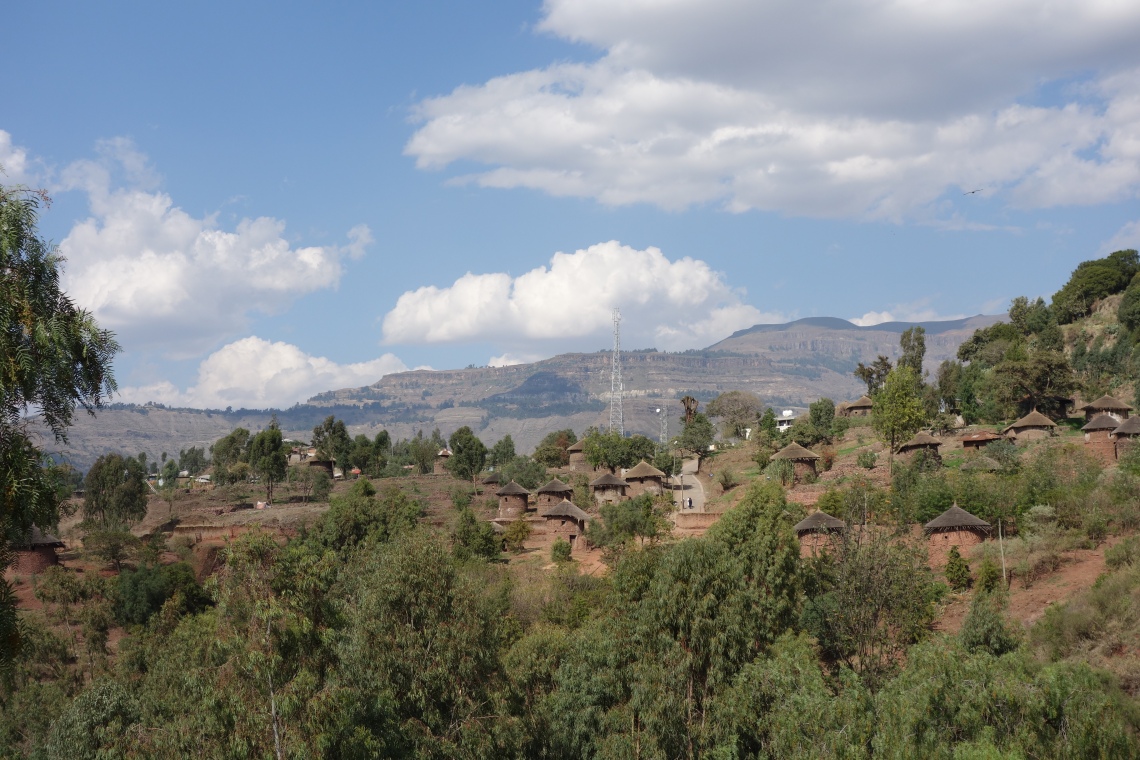







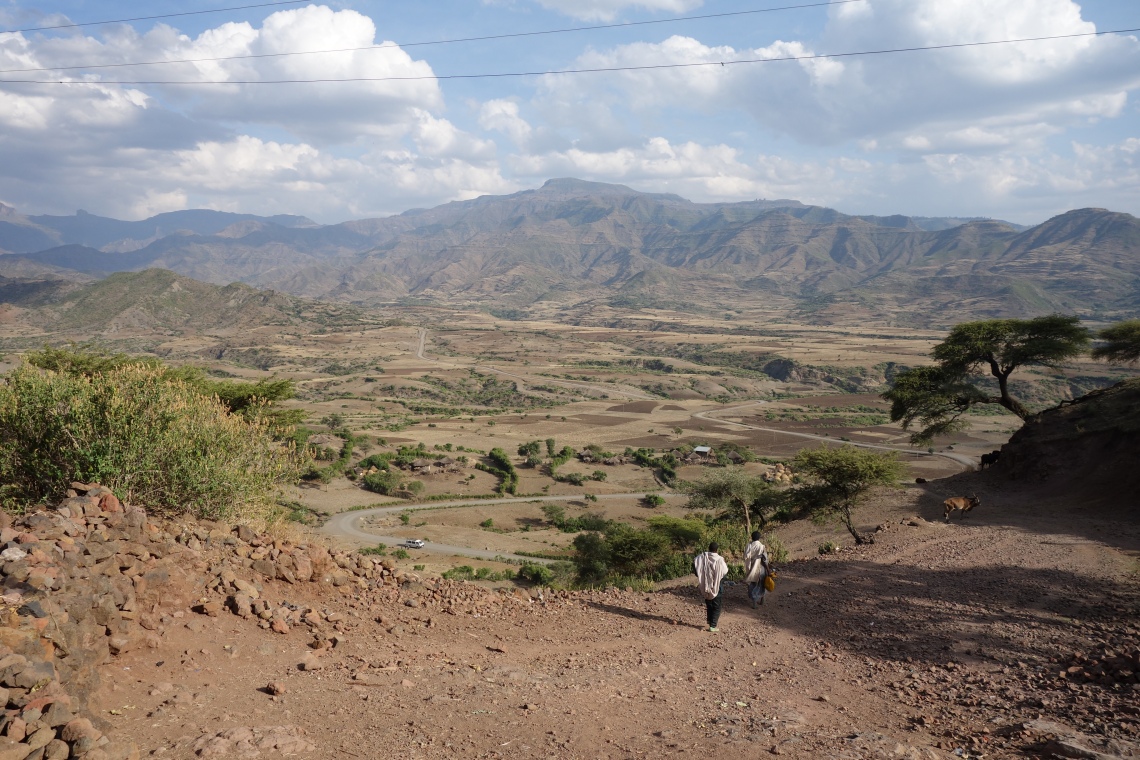











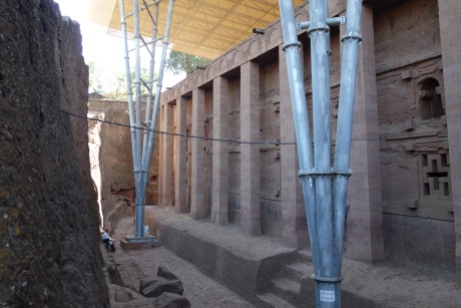
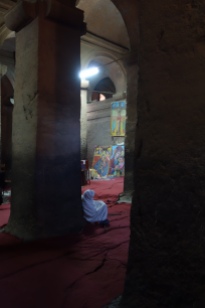





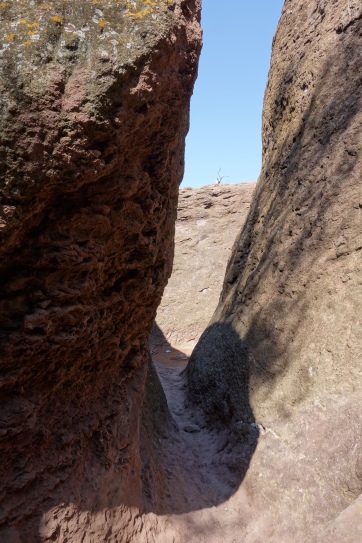













I desire to visit Ethiopia 🇪🇹 soon
Especially look forward to visiting
St Mary’s Church also to visit BILBILA
GIYORGIS/LALIBELA to taste the most
“DELICIOUS HONEY” in the WORLD!
Also all the beautiful churches of Ethiopia 🇪🇹(The Lalibela Churches!!)
Godbless You
Shemhotep
Queen Lorayn
LikeLike
So glad you’re excited to visit! The churches (and honey!) are totallyyyyy unforgettable!! Make sure you consider Gondar too, sounds like you’d be interested in the castles there, as well as the stelae in Axum.
LikeLike